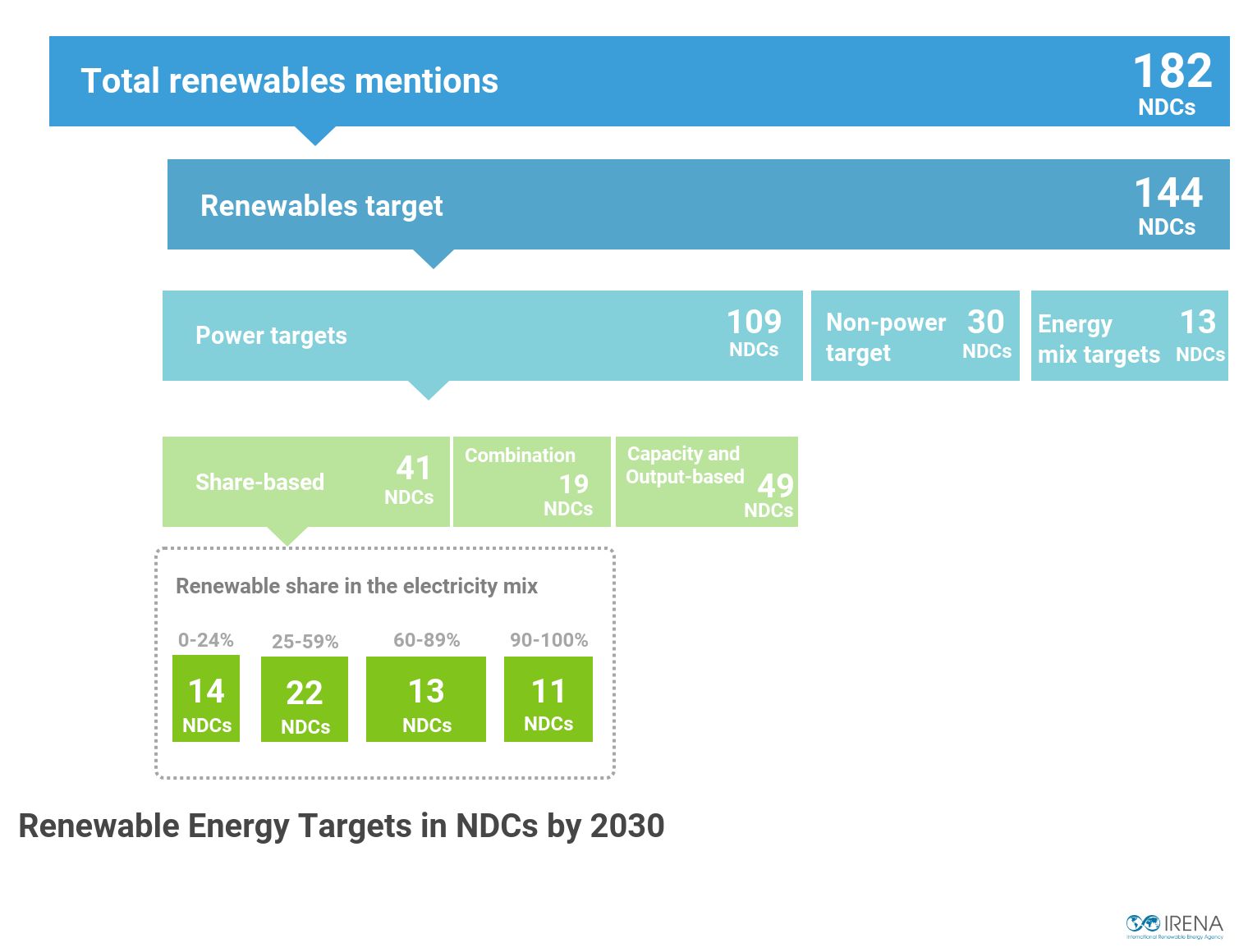Targets and nationally determined contributions
Building on the climate pledges made by participating countries, known as nationally determined contributions (NDCs), IRENA’s analysis provides an overview of the latest commitments since the ratification of the Paris Agreement. The analysis further explores what these commitments mean for renewable energy, which plays a central role in achieving a 1.5°C Scenario.
Although ambitions contained in NDCs were raised around the time of COP26, more needs to be done to put the world on a path to limiting the rise in global temperatures to below 1.5°C. Almost all countries have ratified the Paris Agreement and all parties have now submitted an NDC. At the same time, countries are increasingly making net zero by 2050 commitments. If fully implemented, the original NDCs would only have helped limit global temperature rise to 2.8°C above pre-industrial levels by the end of this century, calling for more ambitious NDCs. Together with the net zero pledges announced, new and updated NDCs are projected to reduce emissions by approximately 20% by 2030 compared with business as usual before the first NDCs, with the potential to limit warming to 2.1°C. However, this is still well above the 1.5 °C goal.
Renewable energy plays a key role in IRENA’s 1.5°C Scenario, which aims for carbon neutrality by 2050. Under this scenario its share of the world’s total primary energy supply grows from 14% in 2018 to 74% in 2050 (requiring an eightfold increase in annual growth). Yet the renewable energy targets in NDCs are nowhere near that. As of 15 November 2021, 182 parties had included renewable energy components in their NDCs, of which only 144 had a quantified target. Of these targets, 109 focus on power and 30 explicitly mention heating and cooling or transport. Only 13 parties have committed to a percentage of renewables in their overall energy mixes. Although electricity accounts for more than half of final energy consumption in IRENA’s 1.5°C Scenario, more effort will be needed in end uses. This requires specific and quantified targets for heating and cooling and transport, set for the short term, to reflect the urgency of the transition. Furthermore, as NDCs are non-binding pledges, targets set in NDCs need to be aligned with national energy plans and renewable energy targets.
The energy transition will require more ambitious pledges, particularly from the developed world, as well as increased international co operation with a view to scaling up climate and renewable energy-related financing, especially for the countries most affected by climate change, namely least developed countries and small island developing states.











